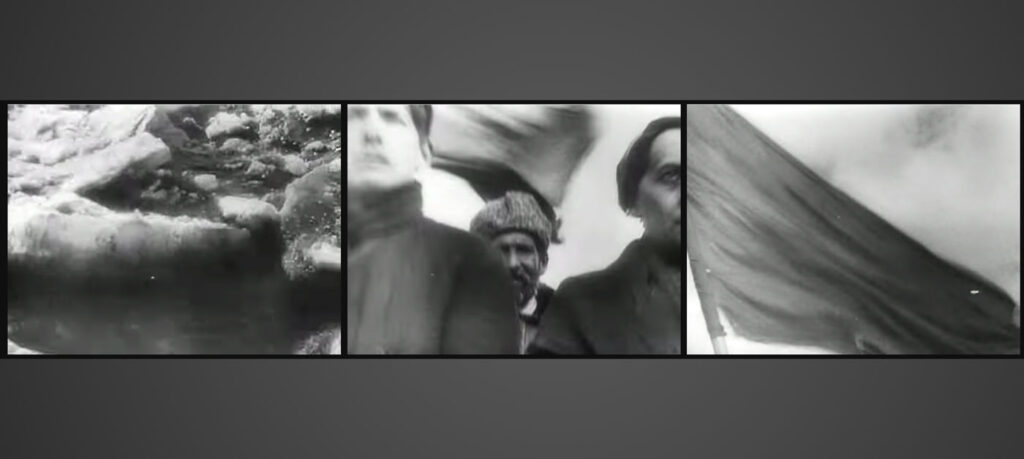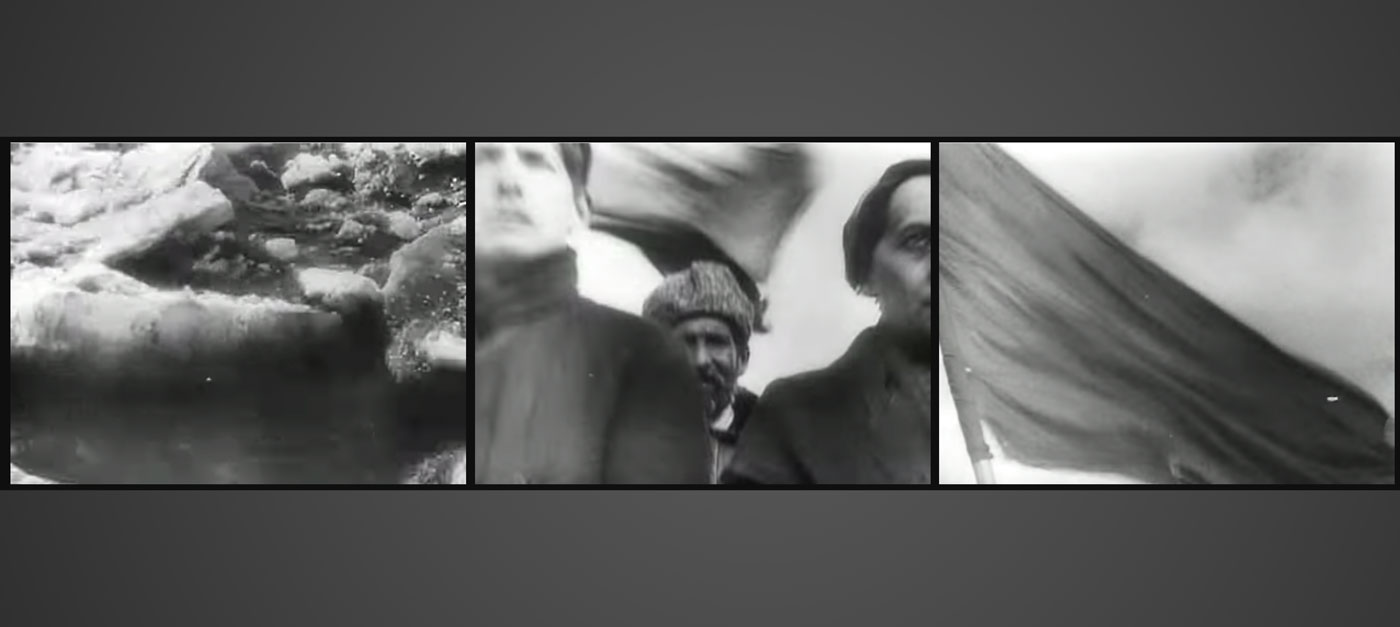Soviet cinema in the 1920s takes the Silent Film use of showing us something that represents a fuller picture for us to fill out to another level. Borrowing on some of the editing techniques seen in Griffith’s films to build tension or create an impression, filmmakers like Pudovkin, Eisenstein, Vertov and others used this visual technique to have the viewer fuse a few elements instead of just giving the audience a single hint to expand on.
They were often deliberately making a point, and so the single hint may not have been enough.
As I recall, they built off what Griffith had pulled off with Intolerance (1916), in particular its final two reels. The cross-cutting and building tension to a dramatic climax that is paralleled across four different stories from four different eras was an example of how you could mash up, if I may use that expression, a number of disparate elements to make one overall point. As lugubrious as Intolerance’s reputation may be or off-putting as its running time and scale may sound, I can tell you that — at least at in in-cinema shows I’ve done, and not if you’re watching the film at home or in your lap with a recorded score — once that build-up gets going, the final minutes of Intolerance are really exciting for an audience.

Soviet filmmakers combined this with the “we’re only going to show you this much” suggestive technique I’ve been talking about, by cutting from one suggested object or person or symbol to another, and then another, and then another. Instead of the impression being built up over the course of an entire reel of film, it happens within a couple of seconds.
This can also be used, over and over, building gradually throughout a sequence, like the infamous Odessa steps part of Battleship Potemkin or the “spring thaw”-protest-chase at the end of Mother. Because this Silent Film technique works on a similar principle to the one where a suggestion of a dramatic element is shown. The difference is that we in the audience use our right brain to come up with the rest from, in its shortest and simplest manifestation, three items — the first thing we’re shown, the second, and the cut between the two.
If I mention an orange with cloves stuck in it, it will conjure up stories or memories for you, fully illustrated. What Soviet montage did, instead, is more like blending ingredients in a mixing bowl. Or even making your morning coffee, just the way you like it.
The first post in this series is here.
The previous post (#37) to this one is here.
The next one (#39) is here.

In THE SILENT CLOWNS, Kerr alludes to this form of “mash up” as an essential element of Silent Film Comedy grammar, which can also be called “collapsed time.”
Kerr, page 56: “[Sidney Drew] throws the heroine from a second-story window, races downstairs, catches her before she lands.” There is a piece of time left out (“we’re only going to show you so much”); the audience must “fuse elements” (“use our right brain to come up with the rest”) to fill in the missing time. If we guffaw, it’s because we “felt the excitement” [Kerr, p. 64] of providing the missing piece of time. (We are certainly not laughing at these film clowns, who have done nothing funny!) The impossible fall-and-catch gag is what Kerr calls the “elaborate visual possibilities” [ibid] of Silent Film comedy that make us laugh.
Jerry Lewis often used collapsed time in comedies he wrote and directed. In THE BELLBOY,” a large woman checks into the hotel to lose weight; a moment later,
collapsed time reveals success. Jerry rewards her slim self with a generous box of chocolates. A moment later a shot of her feet shows candy wrappers littering the ground; a moment later cut to a head-to-toe shot of her former zaftig self with an empty box of chocolates.Jerry and the lady have done nothing funny; if
we laugh it’s because we feel the excitement of having fused the elements of the collapsed time.